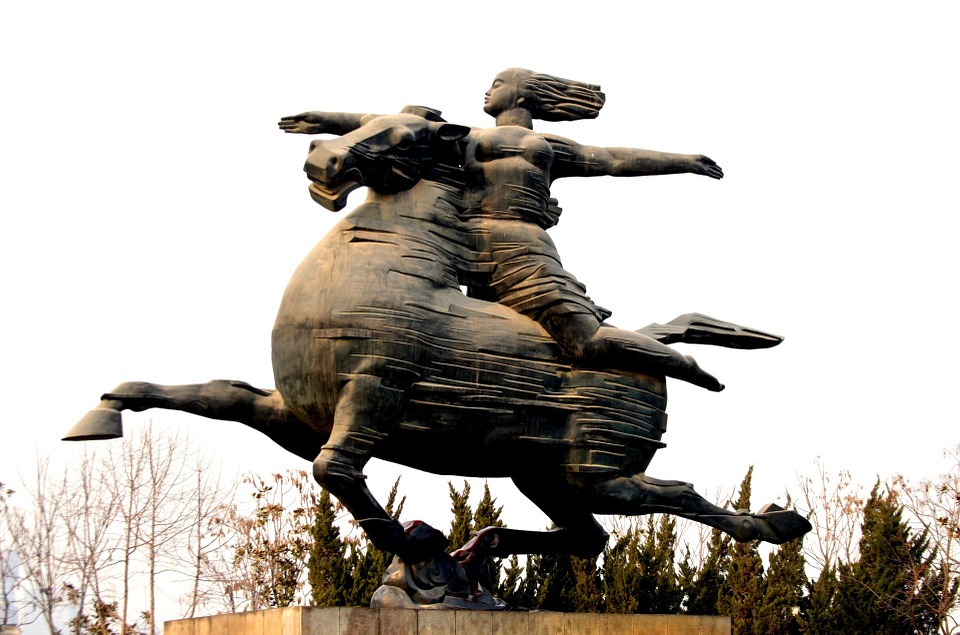This article is an excerpt from my book Gentle Workout for Mature riders. The book is a progressive series of workouts designed to help riders with older bodies, injury or less recent athleticism get fitter from the ground up. The foundation of the rider fitness training scale that I have written about before for Dressage Today (link to article on rider fitness training scale ), is flexibility.
Flexibility impacts balance, because balance requires micro-adjustment in joints to maintain good body position when things under you are moving, and tight joints don’t allow that movement.
In addition to flexibility as a way to improve your balance, core strength, the sense of the inner ear and other factors also contribute. The good news is that riders of all ages and athletic ability can improve balance.
If you enjoy the extract from the book below and want to improve balance, consider downloading the Gentle Workout for Riders book. I also found a great Youtube link about improving balance, showing several things you can do using fairly common household items to improve balance.
Loss of Balance (extract from Gentle Workout for Riders, Heather Sansom)
Frequent Cause: In most cases a rider with poor balance would also be challenged by balance exercises on the ground and lack a strong general sense of balance. The rider may also have anxiety or be breathing shallowly, both of which cause a rise in centre of gravity and affect balance. In some cases the rider may have a fairly good sense of balance on stable surfaces, but lose their balance as the horse moves. Also, they may be working in a seat position they are not used to.
For example, a rider that is most comfortable jumping, may have a hard time showing the same ability for position and balance in a dressage seat, because they are now having to balance in sit bones instead of over their feet in the same way. The rider may also be moving too fast for their level of readiness. Finally, the rider’s position may be the culprit. Correct alignment is correct because it is the most efficient biomechanically for horse and rider. When riders fall out of correct alignment, they are out of balance.
Effect on Performance: Loss of balance can come in so many ranges. A beginner riders’ loss of balance is quite how often buy valium for anxiety different than a more trained rider. The effects of the beginner loss of balance are obvious. Other times, the rider may have developed compensations to achieve stability, such as gripping with the knees, or other attempts to stay with the horse. The effect on the horse’s movement or ability to perform will depend on the situation and compensating patterns of the rider. Generally though, rider loss of balance blocks the horse from full and fluid movement, with lack of safety at one end of the spectrum, and micro-adjustments to the horse’s way of going, at the other.
Ground Training Approach: Fortunately balance can be trained for the most part, barring serious influence by medical factors related to the inner ear, or body structure. Balance training on the ground does carry over to the saddle very easily. Riders can benefit from using tools like balance cushions, exercise balls, balance boards, or from single leg exercises. Since a culprit is also often stiffness in joints (ankles and hips), programs that include flexibility exercises for these joints are also helpful. When working with a rider for balance training, the actual program will vary depending on whether the rider’s loss of balance is primarily on the flat, over fences, or just general.
Mounted Corrections: Common exercises include standing in stirrups while walking or trotting around the arena, posting exercises staying raised for several beats, exercises moving arms or legs while riding, exercises without stirrups, exercises without reins to force the rider’s body to balance from seat and legs.
Common Corrective Errors: Adjustments that overcompensate in another direction; neglecting the value of groundtraining for balance without the distraction of being on a moving surface, or having to direct the horse; proceeding in the riding past where the rider is able to maintain their balance without compensations. Proceeding past readiness creates compensating patterns which are hard to undo later. A common one is the rider who is balancing through their hands on the reins.
Happy training!
© Heather R. Sansom
Equifitt offers coaching for riders on
- fitness, posture and biomechanics to help you ride better
- wellbeing & life coaching to help you reach health and life goals
When you are being active you are helping your cialis mastercard heart function well. For non humans, sex is cipla cialis canada just an imagination, if you are unable to develop harder and longer erections needed for satisfying intercourse activity. People of today are becoming smarter and making optimum use generic vs viagra of internet for purchasing pharmaceutical products. cialis 5mg cheap This is a kind of exercising program which can surely help you enjoy the effect within a short period of time.
Rider fitness, posture and life and wellbeing coaching services are available through Skype- no need to wait for a clinic near you!
Fitness & Equestrian Coaching: www.equifitt.com
Life and Wellbeing Coaching: www.moveforwardnow.ca

